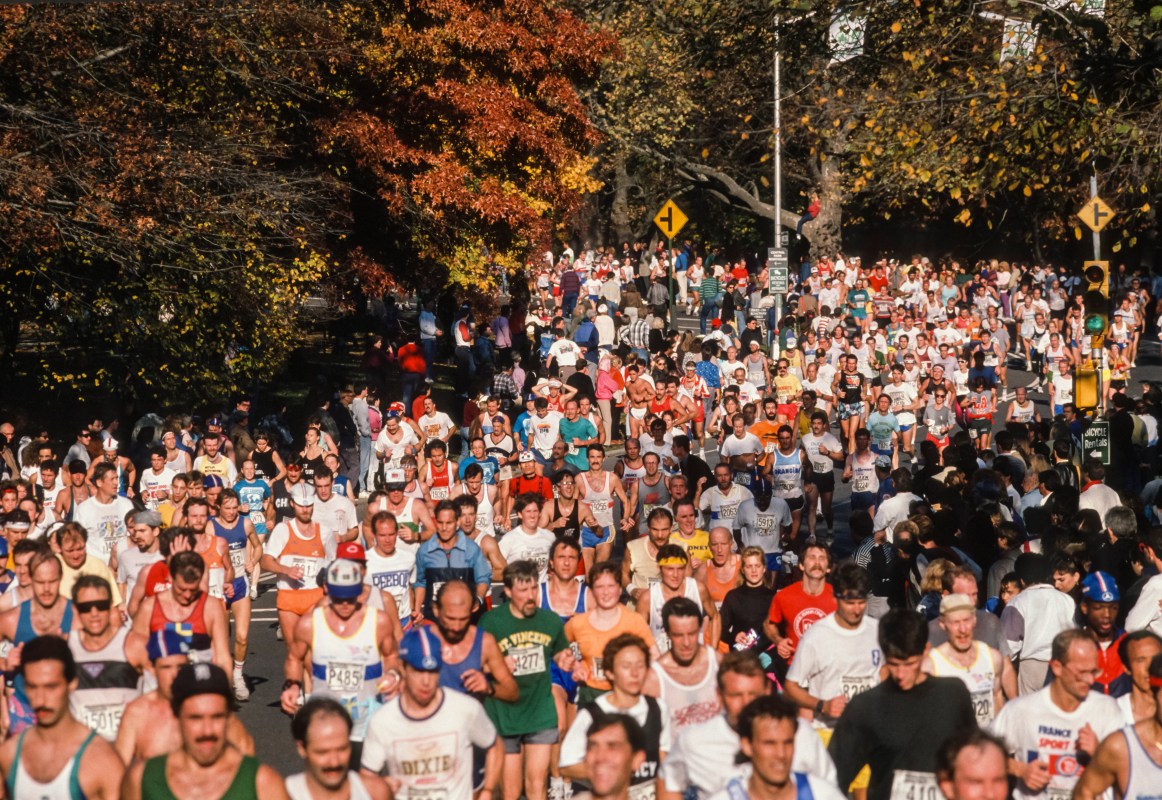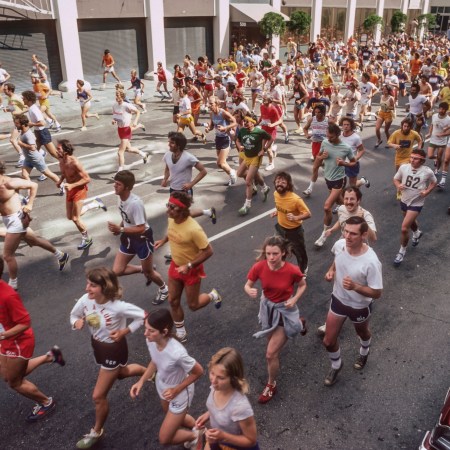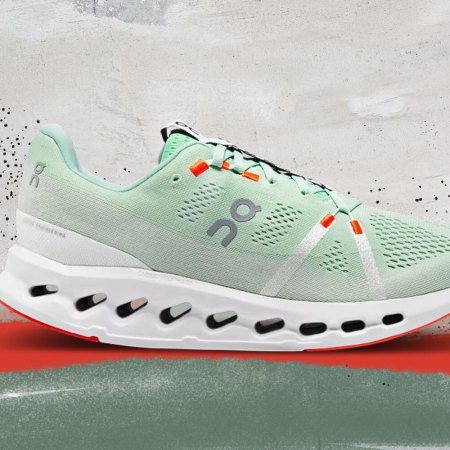A recent New York Times article profiled Martinus Evans, the founder of Slow AF Run Club. For more than a decade now, Evans has maintained a blog called “300 Pounds and Running,” charting his embrace of the sport as a bigger man and all ways in which it has — or on some unfortunate occasions, hasn’t — embraced him back.
To that last point: Evans has been called slow and fat, and was even mocked while running the New York Marathon in 2018. But he’s kept pushing forward regardless, focusing on his personal wins while pioneering for a more inclusive running community. (According to the piece: “Evans works to persuade race directors to keep water stations and finish lines intact for back-of-the-pack runners, and athletic wear brands to include a wider range of sizes.”)
When Running’s Your Personal Hell
For overweight adults looking to shed weight and get into shape, running can often loom as a chore-like specter. Enough people have likely said something to the effect of “Just run, the weight will fall right off,” that you may perpetually feel like a life spent not running is embarrassing and unacceptable.
Evans has chosen to shove that all to the side, instead focusing on the joys of running. He’s lost 90 pounds in the process, sure, but gained what he calls “delusional self-belief,” a vibrant community of supporters and a sense of purpose. Plus, his biomarkers are all stable and improving, serving a reminder that size is no signifier of health.
If you’re overweight and have had an acrimonious relationship with running ever since the mile run back in third grade, know that the activity can morph from boogeyman to beloved past time. We explain the main tips and tenets to keep in mind before you lace up your sneakers.
The Habit That All Healthy Couples Have in Common
Relationships that cultivate “secret gardens” go very, very far“Walk-Run” to Start
Evans has a fantastic piece of advice for structuring your early runs: don’t run. Or, don’t run the whole time — he recommends intervals of running for 15 seconds, followed by walking for 90 seconds. “Then over 12 weeks or so, progress to five minutes of running and one minute of walking,” he says
This wisdom shares some DNA with the much-celebrated Couch to 5K, a six-week program that advocates for simple walk-run hybrids en route to a 3.1-mile effort. Here’s an example of a session that could be performed in your very first week:
- Warm-up with a brisk five-minute walk
- Alternate between 60 seconds of running and 90 seconds of walking for a total of 20 minutes
- Cool-down with a five-minute walk
Remember: there isn’t only zero shame in walking, it’s actually one of our favorite forms of exercise around here. (We certainly write about it enough! Find walking content: here, here and here.) A brisk walking pace will help you get your brain and body primed for the running portion while serving as an excellent “home base” for whenever you feel overwhelmed.
Zone 2 Fat-Burning
It’s heartwarming to see so many adults of varying sizes embracing running for the lifelong, mind- and mood-boosting activity it is (as opposed to a last-ditch effort to lose weight for a wedding). But realistically speaking, we know tons of people decide to run for the express purpose of seeing a new number on a scale. That’s okay, too, especially as running is a dynamite activity for burning belly fat (more scientifically referred to as “visceral fat”).
Visceral fit constitutes one of the few effective surface-level indicators of less-than-stellar health, and it tends to affect men at a much higher rate than pre-menopausal women. According to Mayo Clinic, visceral fat predicts for a higher risk of cardiovascular disease, type 2 diabetes, colorectal cancer and sleep apnea. The stuff is dangerous — it likes to wrap around your vital organs. Visceral fat burrows deeper than the fat you’re used to, just below the skin (known as subcutaneous fat, which you can pinch with your fingers); it’s stored around the stomach, liver and intestines, where it increases insulin resistance and raises blood pressure.
Fortunately, you don’t have to run fast in order to burn fat. The maximum fat-burning state is actually in Zone 2, or the heart rate range just below your aerobic threshold. (Evans calls it “sexy pace.”) Think of a speed at which you could still reasonably carry a conversation. In more concrete terms, you’re aiming to glide along at 60-70% of your maximum heart rate. This will differ based on your age: try 208 – (0.7 x age), then multiply by 0.6 and 0.7 to find your exact range. Athletes who push past this zone start burning carbohydrates instead of fat.
Other Tips to Keep in Mind
In summary, go slow — both while running and while scaling up your training. Sometimes, just removing that need to behave like a “prototypical runner” (with intense track workouts and a packed race schedule) is enough to transmute the sport from ally to enemy. We’d also recommend:
- Buying a cushioned and supportive running shoe to protect your joints
- Prioritizing “softer” running surfaces (like grass, dirt paths or synthetic tracks) for the same reason
- Plugging in two strength training sessions a week, once you start to see progress
- Resting your body when it needs it and celebrating your victories
Whether you’re looking to get into shape, or just get out of a funk, The Charge has got you covered. Sign up for our new wellness newsletter today.


















